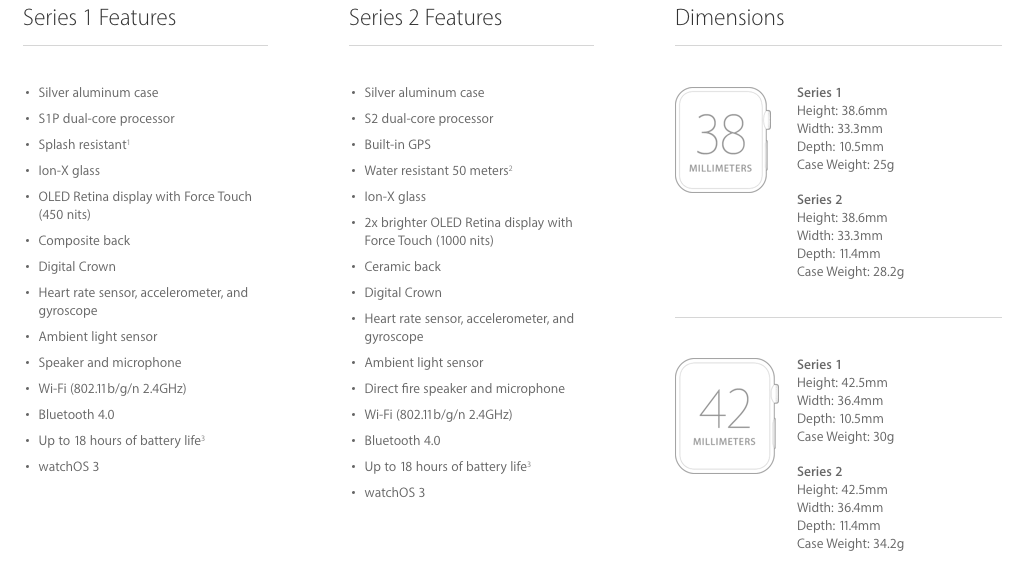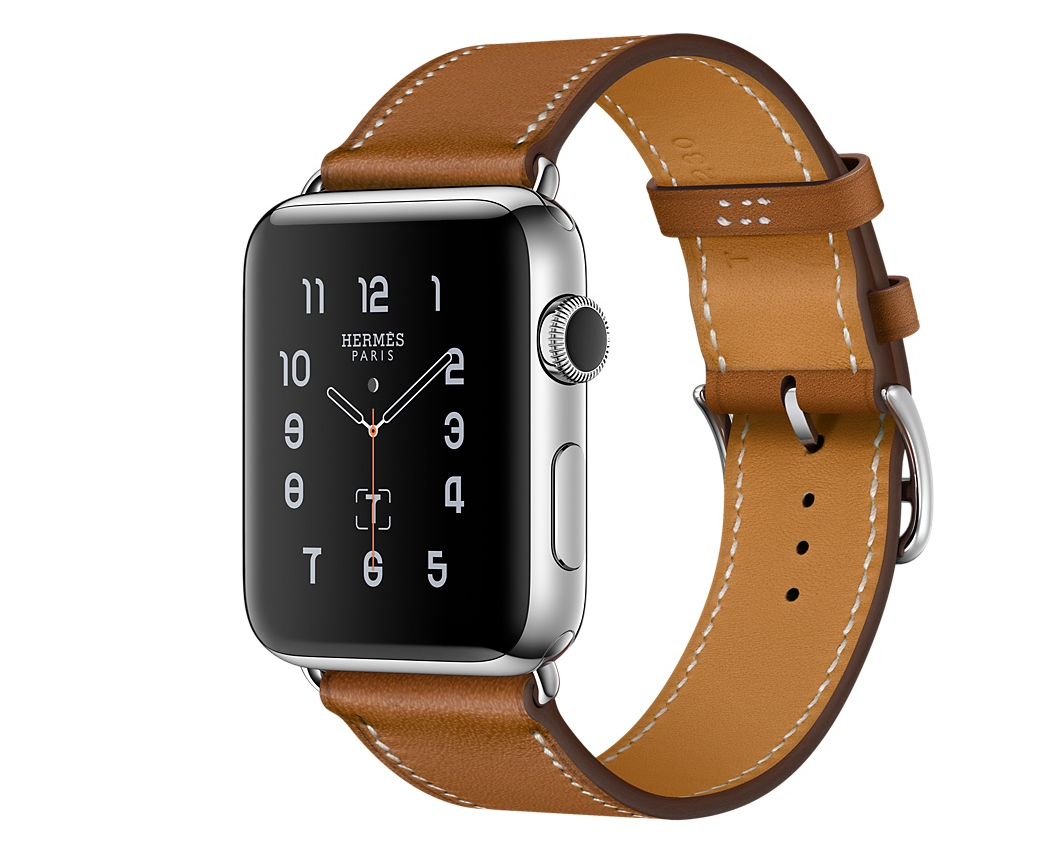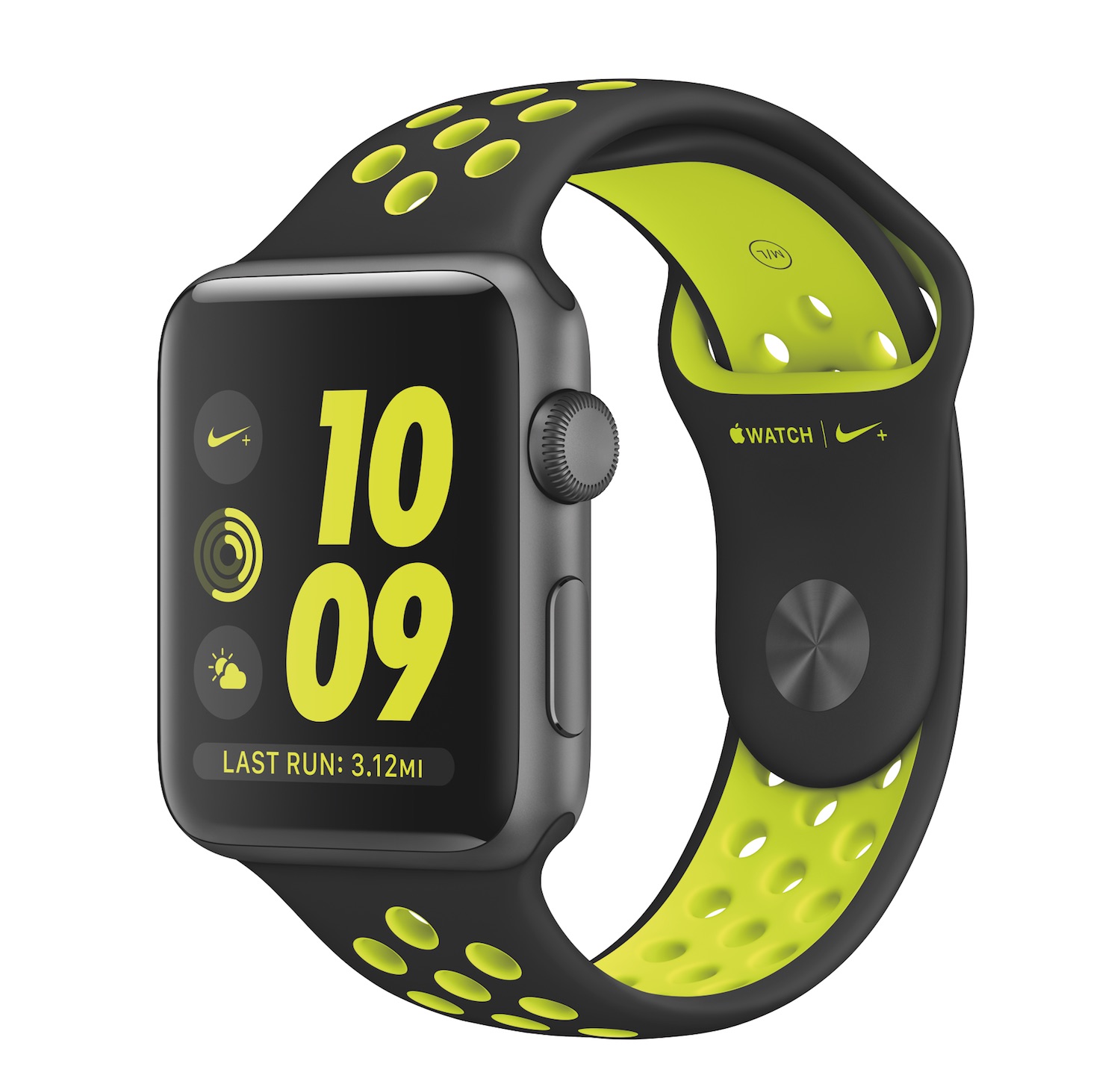Apple Watch Series 2 vs Series 1: What Should You Buy?
The Apple Watch Series 2 costs $100 more than the Series 1, but has a few extra features. Here's a side-by-side comparison to help you decide which is best for your needs.
Apple's second-generation wearable, called the Apple Watch Series 2, offers a brighter display than the original and has built-in GPS. However, the original Apple Watch Series 1 (as it's now called) gets an upgrade to the same processor as the Series 2 and will cost $100 less. So which Apple Watch is right for you?
Design

The Apple Watch Series 2 and the Series 1 are nearly identical in size and shape, but the newer model is about 1 millimeter thicker, and a touch heavier, which isn't surprising, as it has to accommodate a GPS sensor.
MORE: Apple Watch Finds a Purpose: Fitness
For the aluminum case models, the 38mm Apple Watch measures 38.6mm tall by 33.3 mm wide, but the Series 1 is 10.5mm thick and weighs 25 grams (0.88 ounces), whereas the Series 2 is 11.4mm thick and weighs 28.2 grams (0.99 ounces). The 42mm Apple Watch is 42.5 x 36.4 mm, but the Series 1 is 10.5mm thick and weighs 30 grams, and the Series 2 is 11.4mm thick and weighs 34.2 grams.
The ceramic case is bulkier and heavier than the stainless steel and aluminum options: The 38 mm model measures 39.2 x 34 x 11.8 mm and weighs 39.6 grams, and the 42mm model measures 42.6 x 36.5 x 11.4 mm and weighs 45.6 grams (1.6 ounces). That's nearly twice as heavy as the Series 1 watch.
Display
While the screen on both Apple Watches have the same size and resolution — 272 x 340 pixels for the 38mm watch, and 312 x 390 pixels for the 42mm version — the Series 2 offers a brighter display: 1000 nits to the Series 1's 450 nits. That should make it much easier to view the new watch in direct sunlight.
Performance
With the Series 2, Apple is introducing a new dual-core S2 processor, which Apple says is twice as powerful as the S1 chip in its original watch. However, Apple is also upgrading the Series 1 with the same processor, so you should see equal performance from both versions.
Get instant access to breaking news, the hottest reviews, great deals and helpful tips.
Features

The Series 2 will have two features that will appeal to the fitness crowd: Water-resistance to 50 meters (165 feet), and built-in GPS, so you can use the watch to track your location without needing your smartphone.
By comparison, the Series 1 is merely splash-proof, and lacks GPS. However, both models have a built-in heart rate monitor, accelerometer, gyroscope, Bluetooth 4.0, and 2.4GHz 802.11b/g/n Wi-Fi.
Style Options
Where the Series 1 is only available with an aluminum case, the Series 2 will also be sold with stainless steel and ceramic case options. The latter will cost you: The starting price for a ceramic case is $1,249. Within each line, you've got numerous choices for band colors, styles, and materials (such as leather and metal).

The Series 2 Hermes Edition, which has a stainless steel case and leather band, will start at $1,149; prices go up depending on the band you select.

Also only available with the Series 2 is the Nike+ edition. Starting at $369, this model has a sportier fitness band available in a few color combinations (neon green being prominent), as well as some Nike-centric features including watchfaces and a connection to the Nike+ Run Club, which helps motivate you to get out and exercise through shared stats, routes, and other socially applied peer pressure.
Battery Life
Both the Series 1 and Series 2 have the same expected battery life: Up to 18 hours, according to Apple. However, in our experience with similar devices, expect the Series 2 to last a lot less on a charge when using its GPS and cranking its display to the max brightness.
Pricing
The Apple Watch Series 2 starts at $369 with an aluminum case and sport or woven nylon band. By comparison, the Series 1 starts at $269. Stainless steel cases for the Series 2 start at $549, and, as mentioned the white ceramic case starts at $1,249.
So, Which Should You Buy?
Unless you have a ton of money to burn or are very active, the $269 Series 1 might be the better option. With its processor upgrade, it should be just as fast as the Series 2, and last as long on a charge. Fitness-types might prefer the $369 Series 2, as it has built-in GPS, and is more water-resistant. The Nike+ edition is particularly geared towards the athletic crowd, but we'll reserve our final judgment until we've had a chance to test it ourselves.

Michael A. Prospero is the U.S. Editor-in-Chief for Tom’s Guide. He oversees all evergreen content and oversees the Homes, Smart Home, and Fitness/Wearables categories for the site. In his spare time, he also tests out the latest drones, electric scooters, and smart home gadgets, such as video doorbells. Before his tenure at Tom's Guide, he was the Reviews Editor for Laptop Magazine, a reporter at Fast Company, the Times of Trenton, and, many eons back, an intern at George magazine. He received his undergraduate degree from Boston College, where he worked on the campus newspaper The Heights, and then attended the Columbia University school of Journalism. When he’s not testing out the latest running watch, electric scooter, or skiing or training for a marathon, he’s probably using the latest sous vide machine, smoker, or pizza oven, to the delight — or chagrin — of his family.
